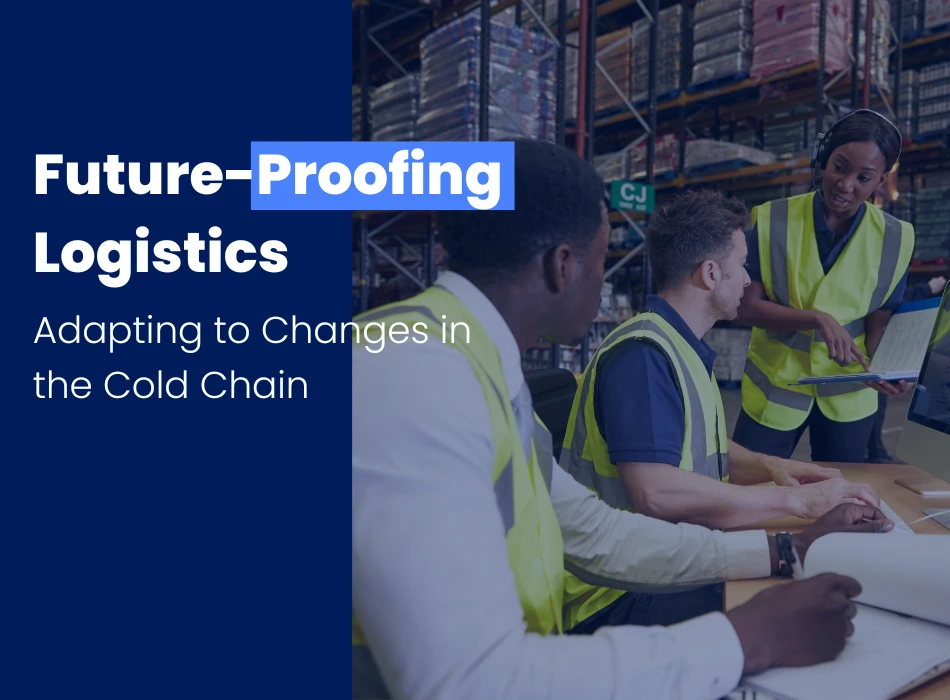Future-Proofing Logistics: Adapting to Changes in the Cold Chain
Explore strategies for future-proofing logistics in the cold chain sector by adapting to technological advancements, prioritizing sustainability, enhancing last-mile delivery, building resilient supply chains, and investing in infrastructure.

As the cold chain logistics industry evolves, businesses must adapt to an array of challenges and opportunities. From technological advancements to sustainability initiatives, future-proofing logistics is essential for maintaining product integrity and meeting consumer demands. Here are key strategies and trends shaping the future of cold chain logistics in 2024.
Embracing Technological Innovations
Key Insight: Technology is transforming cold chain logistics by enhancing visibility, efficiency, and reliability.
- IoT and Real-Time Monitoring: The integration of Internet of Things (IoT) devices allows for continuous monitoring of temperature and humidity levels throughout the supply chain. Companies like DHL Global Forwarding have implemented IoT-enabled temperature monitoring systems that ensure compliance with strict regulations while minimizing the risk of spoilage.
- AI and Predictive Analytics: Artificial intelligence (AI) is revolutionizing decision-making processes by providing predictive insights into potential disruptions. With AI-driven analytics, cold chain operators can proactively identify issues before they escalate, ensuring optimal conditions for perishable goods.
- Blockchain Technology: The use of blockchain enhances transparency and traceability in cold chain logistics. Smart contracts facilitate immutable recordkeeping for Proof of Delivery (POD), reducing processing costs and minimizing disputes. This technology is paving the way for more secure and efficient transactions across the supply chain.
Prioritizing Sustainability
Key Insight: Sustainability initiatives are becoming integral to cold chain operations, driven by consumer demand and regulatory requirements.
- Sustainable Packaging Solutions: Companies are increasingly adopting eco-friendly packaging materials that minimize waste and environmental impact. For instance, Americold Logistics has introduced sustainable packaging solutions designed to reduce carbon footprints while maintaining product integrity.
- Energy-Efficient Refrigeration: The shift towards energy-efficient refrigeration systems is gaining traction as businesses seek to lower their carbon emissions. This not only aligns with sustainability goals but also helps reduce operational costs in the long run.
Enhancing Last-Mile Delivery
Key Insight: Last-mile delivery is a critical component of cold chain logistics that requires innovative solutions to meet growing consumer expectations.
- Smart Delivery Solutions: The use of temperature-controlled delivery lockers and drone deliveries is emerging as a solution to last-mile challenges. These innovations ensure that temperature-sensitive products arrive at their destination safely and on time while minimizing handling during transit.
- Automated Systems: Automation in warehousing and transportation is addressing labor shortages and improving operational efficiency. Robotics and AI-driven systems are being utilized to streamline processes, enhance order accuracy, and optimize space utilization within warehouses.
Building Resilient Supply Chains
Key Insight: Resilience is key to navigating disruptions in the cold chain.
- Diversified Sourcing Strategies: Companies should adopt diversified sourcing strategies to mitigate risks associated with supplier disruptions. Engaging multiple suppliers across different regions can provide backup options in case one supplier faces challenges.
- Collaborative Partnerships: Strategic alliances among logistics providers, technology firms, and regulators can enhance supply chain resilience. Collaborations like the partnership between AR Racking and the Global Cold Chain Alliance (GCCA) aim to create a seamless cold supply chain ecosystem that drives efficiency and sustainability.
Investing in Infrastructure
Key Insight: Continued investment in cold chain infrastructure is essential for meeting growing demands.
- Expansion of Temperature-Controlled Facilities: Logistics companies are expanding their capacity for temperature-controlled storage and transportation to accommodate increasing demand for perishable goods. For example, FedEx has invested in over 90 cold chain facilities worldwide, enhancing its capabilities for transporting temperature-sensitive healthcare shipments.
- Smart Warehousing Solutions: The adoption of smart storage solutions equipped with real-time monitoring technologies ensures that products are stored under optimal conditions, reducing the risk of spoilage during storage.
Conclusion
Future-proofing logistics in the cold chain requires a proactive approach that embraces technological innovations, prioritizes sustainability, enhances last-mile delivery solutions, builds resilient supply chains, and invests in infrastructure. As the industry continues to evolve in 2024, these strategies will be crucial for maintaining product integrity while meeting the demands of a rapidly changing marketplace.
By staying ahead of these trends, companies can ensure their cold chain operations remain efficient, reliable, and sustainable—ultimately benefiting both their bottom line and their customers.